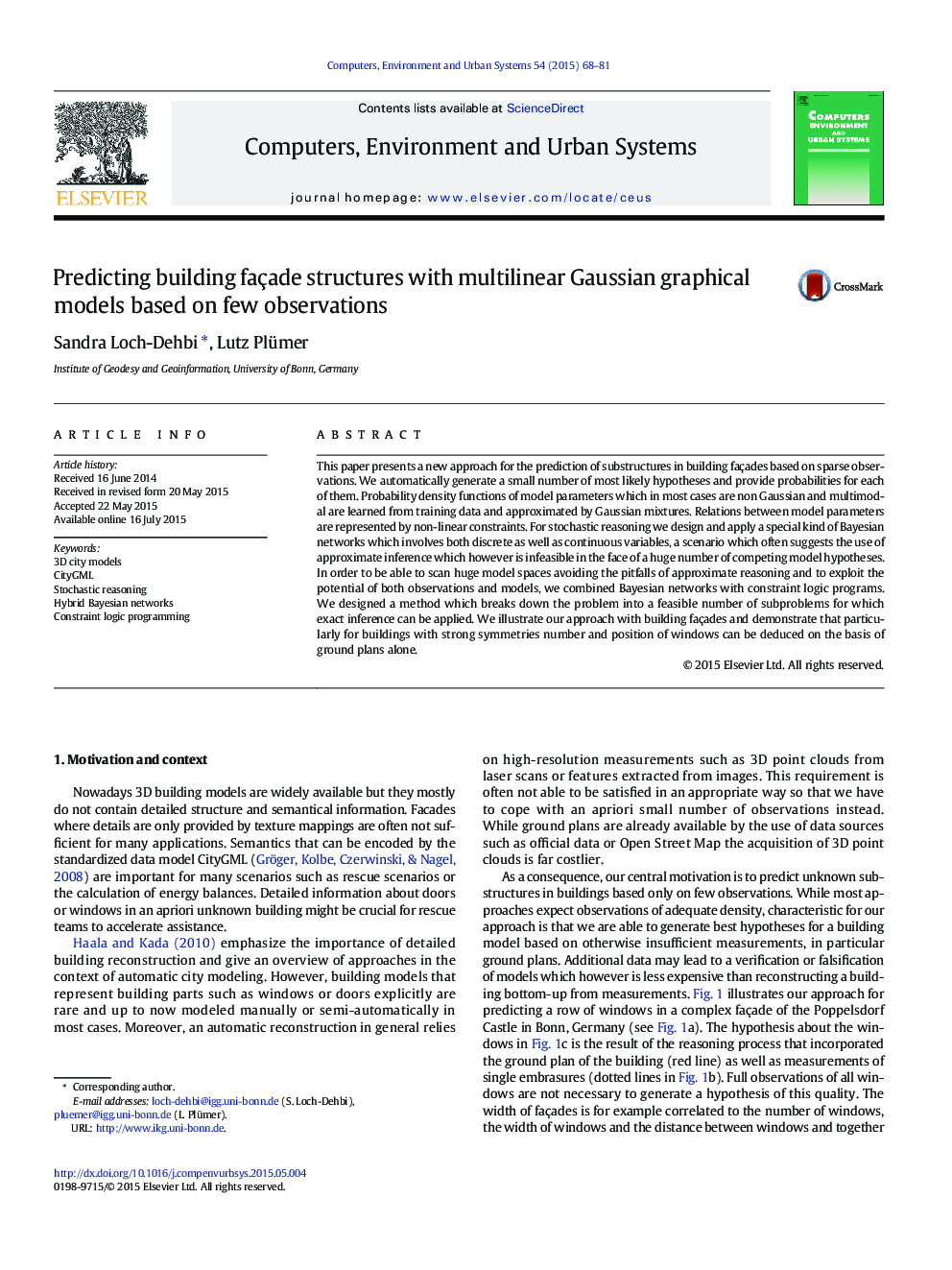| Article ID | Journal | Published Year | Pages | File Type |
|---|---|---|---|---|
| 6921927 | Computers, Environment and Urban Systems | 2015 | 14 Pages |
Abstract
This paper presents a new approach for the prediction of substructures in building façades based on sparse observations. We automatically generate a small number of most likely hypotheses and provide probabilities for each of them. Probability density functions of model parameters which in most cases are non Gaussian and multimodal are learned from training data and approximated by Gaussian mixtures. Relations between model parameters are represented by non-linear constraints. For stochastic reasoning we design and apply a special kind of Bayesian networks which involves both discrete as well as continuous variables, a scenario which often suggests the use of approximate inference which however is infeasible in the face of a huge number of competing model hypotheses. In order to be able to scan huge model spaces avoiding the pitfalls of approximate reasoning and to exploit the potential of both observations and models, we combined Bayesian networks with constraint logic programs. We designed a method which breaks down the problem into a feasible number of subproblems for which exact inference can be applied. We illustrate our approach with building façades and demonstrate that particularly for buildings with strong symmetries number and position of windows can be deduced on the basis of ground plans alone.
Related Topics
Physical Sciences and Engineering
Computer Science
Computer Science Applications
Authors
Sandra Loch-Dehbi, Lutz Plümer,
